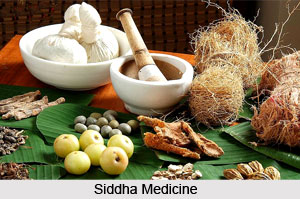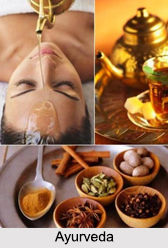 Traditional Indian medicine, one of the oldest medical systems in the world, has various branches, such as, ayurveda, yoga, siddha, tantric and folk medicine. Earlier there was no compact medical system in India hence people used various herbs to cure their diseases. Gradually people began extensive medical research work that led to the discovery of various superficial and empirical systems.
Traditional Indian medicine, one of the oldest medical systems in the world, has various branches, such as, ayurveda, yoga, siddha, tantric and folk medicine. Earlier there was no compact medical system in India hence people used various herbs to cure their diseases. Gradually people began extensive medical research work that led to the discovery of various superficial and empirical systems.
The nature of Indian medicine can also be assumed from the unearthed Indus plates, the skulls recovered from Bhurjaham and the remains of Harappa such as sea fish, bone dust of rhinos and deer. At the end of the Vedic period the pre Vedic medicine had been divided into four separate disciplines natural, supernatural, empirical, and therapeutic. Different scholarly people as well as rulers contributed immensely towards the development of medicine.
As a result during the classical period i.e. from 1000-800 BC the Astanga Ayurveda or the eight fold ayurveda evolved. Ancient people thought ayurveda to be the mother of medicines but the discovery of Indus plates as well as Vedic literature such as Rig Veda and Atharva Veda specified that yoga and folk medicine existed much before. Tantric medicine is a combination of yoga, folk medicine and ayurveda. Rasatantra or Siddha is also an essential part of ayurveda. This system has gained much recognition in South India. Its practitioners use metals and minerals instead of herbals.
Several problems cropped up after Ayurveda evolved as a separate entity. The inception of Rasayana or alchemy also generated further hurdles. It coped with several travails during the pre-British period. Few of them are:
* Discrimination of its users and practitioners
* Imbalanced growth of its various branches
* outcome of Buddhist restrictions and traditions
* Influence of the Muslim invasions
* Dawn of foreign medicines like Unani, allopathy and homoeopathy.
Sophisticated and high profile people preferred ayurveda and siddha where as religious and spiritual men favoured yoga and tantra. The common people were fond of folk medicine. All the sections struggled hard for the development of their respective systems. In the process, only ayurveda developed considerably. The unequal expansion disturbed the practitioners and as a result they showed disrespect towards other indigenous systems. It also led to an interdisciplinary conflict among the ayurveda practitioners. The alchemy division of ayurveda made great progress during the days of Atharva Veda and Kaushikasutra. It led to the discovery of parada kajjali i.e. sulphurate of mercury by the great Nagarjuna. It was a milestone in the history of Indian alchemy. This epoch making discovery influenced the alchemists so strongly that they started claiming rasatantra or siddha as an independent system of treatment.
Groups of Ayurveda
The practitioners of ayurveda were divided into two groups, Rasausadhi Sampradaya (alchemists) and Banausadhi Sampradaya (herbalist). An unhealthy competition prevailed among them that lasted till the sixteenth century. It finally concluded after the publication of the Rasajalnidhi, an ayurvedic text written by Kaviraj Gopal Krishna Bhattacharya. The competition lasted in West Bengal till the nineteenth century.
Impact of Traditional Customs on Traditional Indian Medicine
The traditional medicine was greatly influenced by the Hindu and the Buddhist injunctions and customs. The Hindu surgery was greatly affected by the theories. The theory of non violence preached by Gautama Buddha also affected it. The well known orator of the Hindu Sastra, Manu declared `chikitsakan debalakan barjashu habyakabbyayo. ` It meant that the washermen and the physicians did not have the right to take part in any auspicious occasions of the Hindus. The vaids and kabirajas who earlier enjoyed a respectable position in the society lost their posts. Thus, surgery in traditional medicine faced obstructions that hindered its growth and progress. This created a huge gap between Indian and western surgery.
Impact of Muslim Invasion on Traditional Indian Medicine
The invasion of the Muslims further accelerated the travails of traditional medicine. The continuous attacks of the Muslim rulers on the fortresses of the Hindus and Buddhist academic institutions caused huge damage to the age old tradition of traditional medicine. Unani medicine was also brought by them and was promoted by their patrons. Thus, traditional medicine again suffered a blow at the hands of the Muslims. However, with time the Muslims realised that unani would not sufficiently fulfil their purpose hence traditional medicine was adopted and willingly promoted by them. Akbar had also invited some European doctors in his court.
During the reign of Firoz Shah Tughlaq (1351-1388) traditional medicine was neglected while it gained immense recognition during the rule of the Mughal Dynasty. Most of the translations of Indian medical texts were accomplished during this period. The Mughals appointed several Hindu vaids and kavirajas as court physician in their courts. They remained successful in curing some complicated cases. This helped them win the confidence of some Indian kings and chiefs. In one instance Dr. Gabriel Boughton successfully cured the third degree burns case of the daughter of Shah Jahan. Since then they were invited in almost all Indian royal and local courts. Many affluent families also appointed European doctors.
Even Nawab Hussain Shah of Bengal (1493-1519) appointed Kabiraj Mukunda Das as his court physician. Many regional or local rulers also followed this tradition. Thus, the growth of Indian traditional medicine was curtailed. The actual development of traditional medicine took place during the first half of the modern period but the second half almost restricted its development.




















